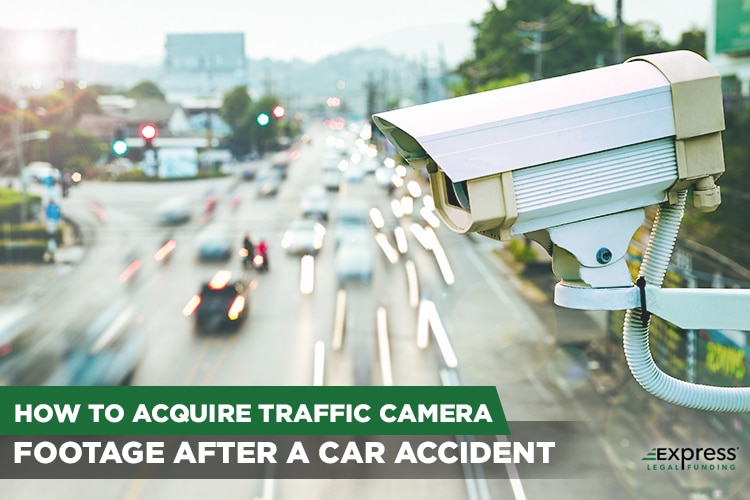
Motor vehicle collisions are extremely common on today’s roads. Access to a working car is more important than ever since our society has continued to grow, and now more than ever, we need cars to navigate large cities.
Considering how long some commutes can be, walking and mass transit are generally not an option for the average American.
Unfortunately, the need for a motor vehicle has done nothing to reduce the cost of such machines, and we often end up paying exorbitant prices for a simple model.
Nevertheless, cars (and other motor vehicles) have become invaluable additions to our belongings and are a common sight. The problem is that not all people are as cautious with their vehicles as they should be.
Motor vehicle collisions are common on modern roads, with tens of thousands of daily car accidents happening nationwide.
When these collisions occur, drivers and passengers will likely be injured, and the vehicles we work so hard to purchase are damaged (occasionally beyond repair).
These collisions can be devastating, depending on your health and financial status. Car crashes that are not your fault that resulted from someone else’s negligence, can also lead to lawsuits and legal battles.
The biggest problem with motor vehicle collision lawsuits is proving that the other driver was responsible for it. It is common for the at-fault driver to claim that the person they struck was the responsible party.
Getting Traffic Camera Footage and Car Accident Cases
One of the best tools to counteract the driver responsible for a car wreck denying liability is to obtain traffic camera video footage from nearby intersections.
Unfortunately, this process is not always straightforward, and most people have no idea where to start besides Google, which is the reason people find their way to this article to answer their questions about how they can collect traffic light camera footage after a car accident.
Before we begin discussing the steps and procedures required to access this critical traffic video recording footage after getting in a car crash, let’s review the following list, which answers the question:
What are the different types of traffic cameras?
Types of Traffic Cameras:
There are two primary types of traffic cameras, which are in addition to traffic surveillance cameras that are constantly recording and automatic sensor cameras that take still photos of license plates when it comes to enforcing the law.
- Enforcement Cameras: These cameras are used to catch drivers driving unsafely and catch them in the act of traffic violations and get photo evidence for issuing tickets. Enforcement cameras include – Red light cameras and Speed cameras.
- Non-Enforcement Cameras: These cameras typically keep track of the conditions of the road in real-time and are not used for enforcing traffic laws or issuing tickets.
Non-Enforcement cameras include – Automated Number Plate Recognition Cameras (ANPR cameras take pictures of license plates (instead of reading toll tags, i.e., on bridges and HOV lanes) and Traffic sensor cameras (used to deflect the flow of traffic).
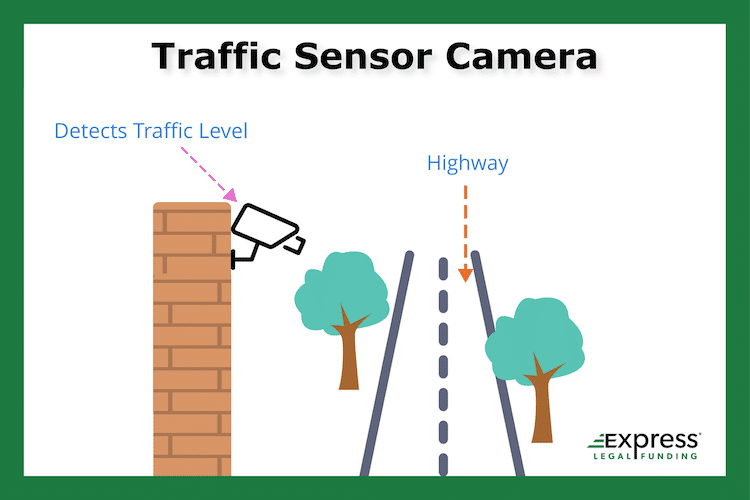
Step #1: Camera Location and Jurisdiction
Acquiring traffic and red-light camera footage is extremely important to ensure your lawsuit’s success against the other driver.
One of the biggest challenges with these cases is proving that the other driver hit you and not the other way around.
Unfortunately, it should not be a surprise that after a car wreck happens, the at-fault driver will often attempt to deflect blame to avoid having their record smeared and dealing with increased insurance premium costs.
Both of these happen by default when the at-fault driver accepts liability for causing the accident, which means they have long-term higher prices to pay.
In contrast, the driver at fault will generally avoid these costly repercussions if they manage to avoid being held responsible for the accident.
This is the last thing you should want if you are a car accident victim of a crash that was no fault of your own and you have incurred costs due to property damage to your car and bodily injuries.
To make sure this does not happen and improve your odds of winning a lawsuit or negotiating a fair settlement, you will need to secure evidence that proves not only was the accident not caused by you but also that the accident was another driver’s fault.
One increasingly common location where accidents occur is on streets where various types of traffic cameras are recording, allowing the state to access security camera footage whenever an accident occurs or when a specific vehicle must be located.
Not every intersection or roadway has a traffic camera.
But, when available, traffic camera footage can be extremely valuable to law enforcement and car accident lawyers.
Although not always required to access traffic cam footage, you may need to get a subpoena from the court before the government agency that is currently storing the footage will give it over to you.
To get a subpoena, which can compel a person to show up in court or, in this case, provide evidence in a claim, it takes the clerk of a court to issue a written order in the name of the judge, which is easier said than done.
That is why you should contact a law office for a free consultation.
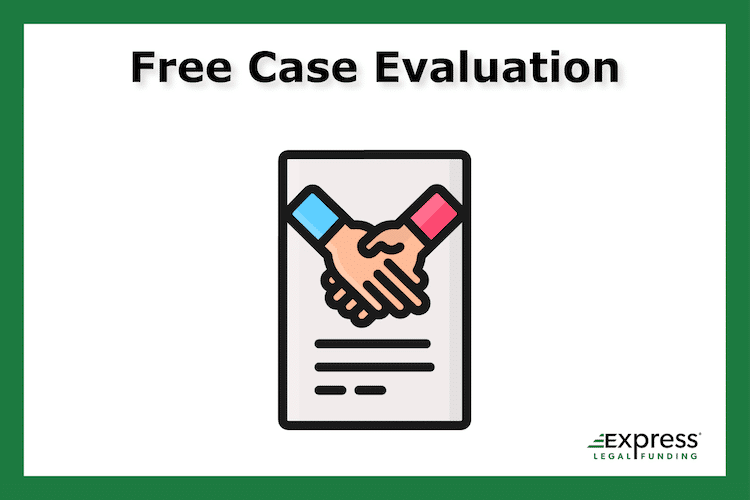
If you decide to hire an attorney after having your free case evaluation, they can give you legal advice and help get the subpoena required to gain access to the recorded traffic cam footage.
Even when you can obtain the recorded footage without having to involve the courts, you can expect the process to be complicated and time-consuming.
With that being said, it still is worth every bit the effort. Once the footage is in your possession, it can corroborate your claims and irrefutably prove that the other driver was responsible.
How to Access Traffic Camera Footage?
The first step to accessing traffic camera footage is identifying the traffic camera’s location, which should be fairly easy since you will likely remember where the accident occurred.
If the exact location has slipped your memory, you can reference your copy of the police report, which will have the location.
If you do not have a copy of the police report, contact the local police department or the Department of Transportation to get the camera’s location.
However, the best course of action is to mentally note where the accident occurred and take pictures of markers that will help you identify the location at a later date.
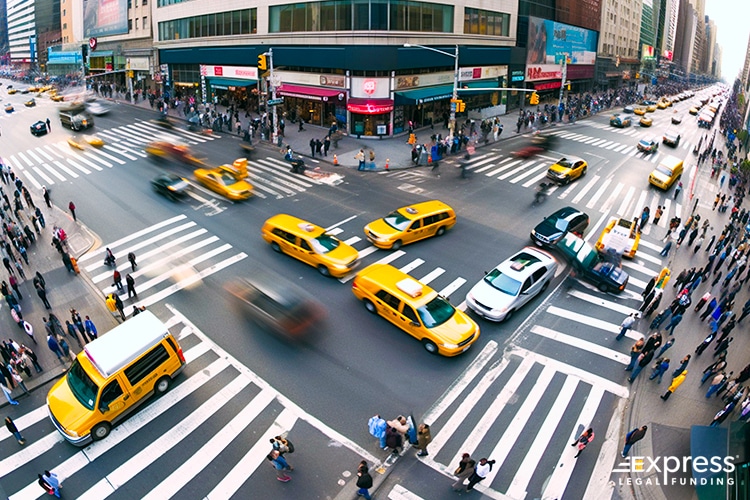
Once you have the camera’s location, you can use the information to identify the jurisdiction. As strange as it might sound, not every police officer can operate within the entirety of your state or city.
Different agencies (metropolitan, sheriff, etc.) have jurisdiction over different areas of a city or state.
Insofar as traffic camera footage is concerned, a jurisdiction might not even lie with the police since the cameras might be operated by the Department of Transportation or a private firm, depending on the state and county.
Identifying jurisdiction is critical since it helps you determine who to contact to get a copy of the footage. The jurisdiction is directly tied to the camera’s location.
For example, if the camera is located in Henderson, Nevada, the Las Vegas police could not simply obtain a copy without help from the Henderson police, which oversees and is responsible for its own jurisdiction.
Step #2: Contact the Proper Agency
Once you have identified the agency responsible for the traffic camera footage, the next step is to reach out to their representatives.
Regardless of whether the police department, Department of Transportation, or a private firm manages the camera, they all have contact information.
How to Request Traffic Camera Footage?
Depending on the policies of the jurisdiction’s government agency responsible for storing the traffic camera footage, you can typically contact them to request access to the traffic cam video via one or a combination of the following:

Ways to Request Traffic Camera Video
- Official phone number
- The state’s DOT website
- Specific e-mail address
You may have to download a pdf form to fill out and e-mail it back as an attachment or upload it to make the formal video record request.
You can contact these agencies directly or have a proxy contact them on your behalf (usually the law firm you hired to represent your interests in the case).
Do You Need a Lawyer to Request the Traffic Cam Video Footage?
No, you do not need an attorney to help you get traffic camera footage, and you are allowed to directly request access to the video recording from the agency.
However, that does not mean you are making the right choice of going it alone, and not hiring a lawyer to represent you is a good choice.
Typically, these requests are more successful when a personal injury lawyer completes them because they have done it before, and, as mentioned before, they can help you get a subpoena from the local court system if need be.
So at the end of the day, it is highly advisable to seek a car accident attorney’s help to access the traffic camera footage from a car wreck.
A lawyer will also help you build your car accident case to get the maximum compensation you deserve.
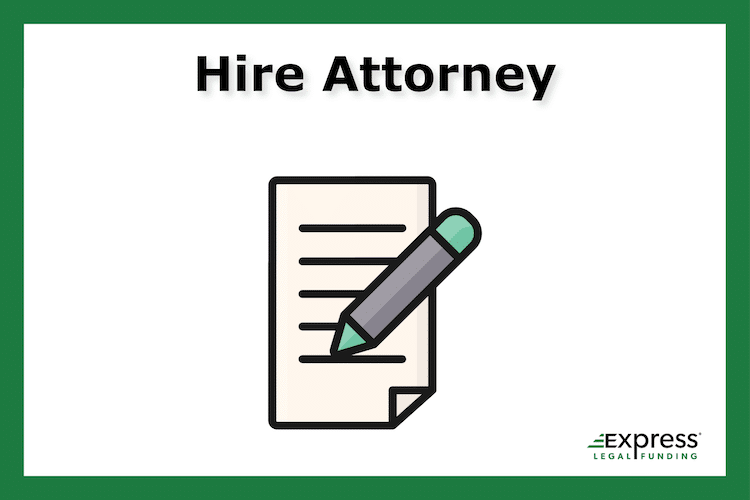
Even with the no-a-win, a no-fee lawyer taking their fee from your total settlement amount, you should be financially better off than if you attempted to settle directly with the insurance adjuster with no attorney help.
Nevertheless, despite this advice, direct requests can be as successful as long as you meet all the requirements outlined in the request documentation on the forms themselves, which is often expounded upon on the correct municipality’s agency website.
Requesting the footage of a car accident can get complicated since you must provide details that the agency needs to narrow down the footage.
This includes date, time, and street names that the agency can cross-reference with their stored footage.
Some agencies will require you to fill out a privacy release form before they give it to you, which usually includes a statement assuring them that you will not use the footage for any purpose beyond your personal needs (i.e., a personal injury case).
Furthermore, some agencies charge a small fee for the time and effort it takes to identify the correct footage and the resources used to create a copy (i.e., a disk or flash drive).
Therefore, you should inquire about the potential cost before you finalize the request.
Making the request does not mean fulfilling the requirements and waiting for the agency to deliver.
Organizations like these deal with many requests daily, meaning some requests fall through the cracks.
You should periodically follow up on your requests through polite e-mails and phone calls inquiring about the status of your request. Otherwise, there might be a significant delay in the footage reaching you.
Step #3: Check the Traffic Camera Video
While requesting specific traffic camera footage might seem simple, it requires a lot of patience, paperwork, and follow-up.
Even if you follow the steps perfectly, there is no guarantee that you will end up with the footage you requested.
Unlike intersection and speed cameras that take a photo of a car’s license plate, when its sensors detect a driver running a red light or going over the speed limit, a traffic camera records video footage in real time.
This functionality requires constant footage to add up to 168 hours a week for each camera in a municipality. So for large cities, millions of hours of footage must be uploaded and saved to hard drives via the central server and database system.
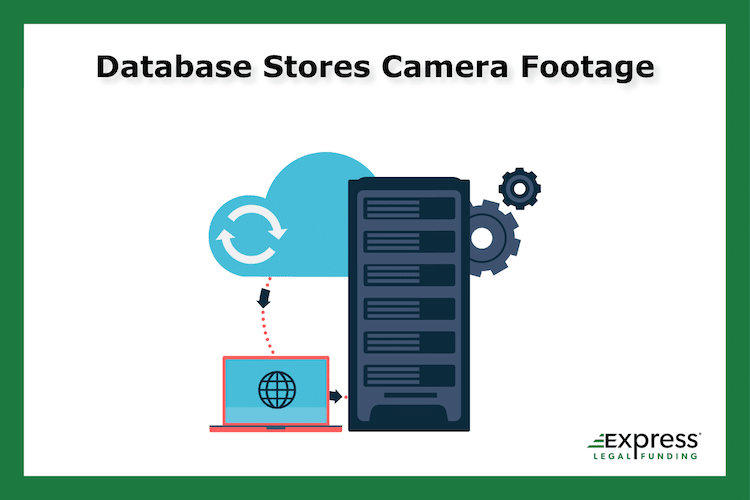
That means, realistically, the only way the associated agency employees can locate the traffic cam video footage you requested is if you can provide the correct location and time of the accident.
Even when you point them in the right direction, it is a highly time-consuming process that is not immune to potential errors, meaning the employee handling your request might make a mistake and send you the wrong footage.
Therefore, you should review the footage to ensure it matches your expectations and captures your auto accident. You must request a correction immediately if they send you the wrong footage.
While scanning the camera footage for the proper clips is time-consuming, you have a time constraint automatically built into your request.
Regardless of who maintains the cameras, the footage is only stored for a finite period that varies by state, county, and agency.
How Long is Traffic Footage Stored?
The amount of time government agencies store traffic cam footage can vary greatly depending on where and the type of traffic camera that made the recording.
While some agencies may store the recorded video for more than a year, others may overwrite or delete the traffic cam footage from storage as soon as 24-72 hours to make room on their hard drives for newer files of the recorded traffic cam video.
Due to some transportation agencies only storing the traffic camera footage for a few days, you should make your initial request as soon as possible, as once it is deleted, it’s too late, and the video footage will be lost for all time.
While reviewing and verifying the footage sent is the critical next step, there is more that will need to be done than just checking the footage to ensure it is the right one showing the events of your car accident unfolding.
Reviewing the footage allows you to observe the accident from a perspective you did not have when you were hit.
When an accident occurs, we have a limited view through the front and back windshields and side windows in our vehicles, which prevents us from getting the full details of the accident.
Review Traffic Camera Footage for Evidence
Acquiring the camera footage gives us access to certain information that would have been unavailable then.
For example, you can narrow down the exact position of the vehicles when the collision occurred and evaluate the rough speed each vehicle was going.
Furthermore, it allows you to revise your official statement or change your legal strategy if there are some details you need clarification on.
In most scenarios, the footage can corroborate your claim by proving who the at-fault driver is beyond the shadow of a doubt.
Checking the footage and taking notes on what you see can give you the necessary context to enhance your car accident case and increase your odds of winning your claim.

Unfortunately, it might not be possible for you to finalize the claim or take advantage of the footage independently.
To this end, we want to remind readers that it is your right to retain legal counsel for official guidance on taking advantage of the footage you receive from the agency.
If you elect to forgo legal representation, you can still file a claim independently to seek compensation from the at-fault driver’s insurance company.
Bonus Step: Find Alternatives to CCTV Video Footage
Traffic camera footage can make a huge difference in whether you can win or lose your claim, especially if there is video evidence recorded of the accident that conflicts with your accounting of the events.
Having camera footage proving the other driver was responsible can effectively be the primary piece of evidence you need to win the car accident claim without much argument from the defendant’s legal team (assuming they do not deny their client was driving the car that hit you).
Unfortunately, acquiring CCTV footage is not always an option since they are not installed on every street.
If your accident occurred on a major road (i.e., an an interstate highway, freeway, collector, or arterial road), there will almost always be a traffic camera, especially in a big city.
That said, smaller roads (i.e., residential or back roads) are less well monitored and generally lack camera recording equipment.
There are exceptions if the road is close to a business with surveillance cameras installed to prevent theft. Unfortunately, you might have to find alternative pieces of evidence if traffic camera footage is unavailable.
Dashcam Video Evidence of Car Accident
In a perfect world, you or the other driver could provide dashcam footage, which provides point-of-view video evidence.
However, most people do not install dashcams on their cars, so this is far from guaranteed.
Physical Damage to Car Body
Fortunately, having your vehicle assessed by mechanics can provide expert opinions corroborating your story.
A skilled mechanic can identify whether you caused the impact or were struck by another vehicle.
Additionally, most accidents occur in areas where other vehicles are driving or pedestrians are walking, which means there may be eyewitnesses that saw the accident event unfold.
Eyewitness Evidence in Police Reports
When you contact the police after an accident, these other individuals may be interviewed and provide statements to the police about what they remember seeing.
This information is often included in police reports and provides additional pieces of evidence.
Cellphone Video Footage of Car Accident
Another way pedestrians and drivers who witnessed the car wreck can help out is by providing cellphone video footage and photos that can further confirm the other driver was responsible.
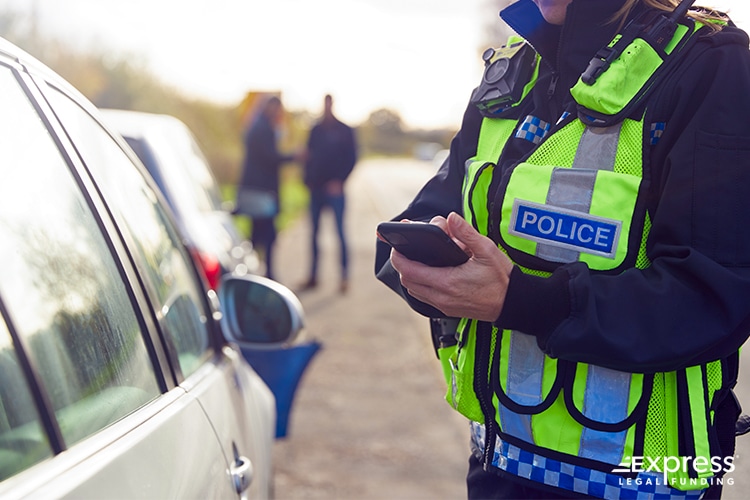
These alternatives can make it easier for an experienced attorney to prove your side of the story if a traffic camera does not capture the evidence. The more evidence you have, the easier the personal injury claim becomes.
Closing Statements on How to Get Traffic Camera Footage
Motor vehicle collisions are increasingly prevalent and are the nation’s leading cause of personal injury claims.
Acquiring traffic camera footage expedites the process and makes it virtually impossible for the defendant’s insurance adjuster to deny their client’s culpability.
Unfortunately, obtaining the footage of your accident is seldom easy since most agencies will require you to jump through several hoops before they give us the footage.
Furthermore, requesting footage for your claim can cost a small sum that adds to your current legal and medical expenses incurred by the case and the daily cost of living; these expenses tend to add up and overwhelm us.
We at Express Legal Funding understand the struggle of keeping afloat when new expenses bombard you.
When you need to file a personal injury claim, it means you have to undergo expensive treatment and deal with other medical costs you could not predict.
These unexpected costs, combined with your needing to repair or replace your car and miss work, mean it is more than understandable that you may have trouble keeping up with your usual bills and day-to-day expenses.
With this being the reality, many people find themselves short on cash, which is where we, as a legal funding company, can step in to help you financially get through this challenging situation.
Our pre-settlement legal funding provides financial relief during a plaintiff’s pending lawsuit.
By working with us, you can get advance funding, so you have money now to pay bills and make new purchases now, well before your case ends.
How Does Our Pre-settlement Funding Work?
From a contract standpoint, how legal funding works is that it is an exchange, between a buyer and seller, with the buyer being Express Legal Funding and the seller being you, the claimant who is suing another party for causing them to suffer injuries and damages (i.e., a car accident claim).
That means we can advance you some money now before your case ends by purchasing a portion of your claim’s potential settlement or court award money.
Since it is a purchase agreement, it is not a loan, meaning no lender or borrower is involved. The money is advanced as non-recourse funding, so the lien is on your potential case proceeds and not on you, the legal funding client.

This makes it risk-free for you, as you do not bring on any personal debt if you go to court but unfortunately lose and do not recover any money from your claim.
In that case, the pre-settlement advance cash you got from us is yours to keep for free, as you won’t have to pay us a single cent. We only get paid when you get paid by partaking in our share of the money recovered from your claim.
So if you need cash now and not only later when your case ends, you should call us to learn more and apply online anytime, 24/7.
Every day more and more people experience firsthand how getting pre-settlement advance funding from a case can be an excellent financial option to help them keep their bills in check while their case progresses through the civil justice system.
You can apply confidently now, as it will incur zero upfront costs. We are standing by and look forward to helping you.
(Missouri consumers: Please note that the type of pre-settlement financing we can provide to injured and damaged claimants in Missouri are recourse loans.
Therefore, they are not risk-free cash advances contingent upon a potential settlement or jury-awarded proceeds of a claim.
Pre-settlement loans and car accident loans in states like Missouri are recourse loans and must, technically, by law, be repaid. Express Legal Funding-Missouri, LLC is a loan company licensed to give these loans in MO.)
